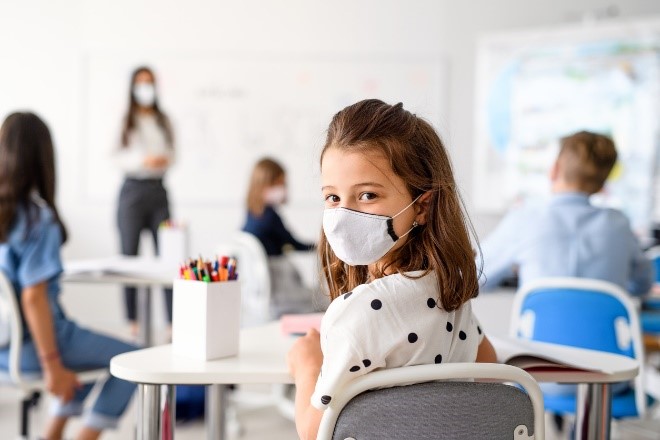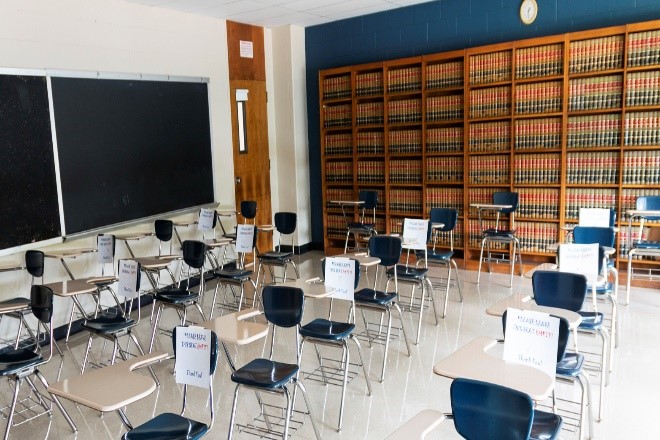 School Districts have been pressed to make many adjustments
to the ways they use and operate their facilities over the past year in
response to the COVID-19 pandemic. Guidance
provided by the American Society of Heating, Refrigeration and Air-Conditioning
Engineers (ASHRAE) for reducing airborne infectious aerosol exposure have
included improved air filtration (MERV 13 or better), increased ventilation
rates, running HVAC systems longer to “flush” spaces between occupied periods
and incorporating disinfection technology such as Ultraviolet Germicidal
Irradiation (UVGI).
School Districts have been pressed to make many adjustments
to the ways they use and operate their facilities over the past year in
response to the COVID-19 pandemic. Guidance
provided by the American Society of Heating, Refrigeration and Air-Conditioning
Engineers (ASHRAE) for reducing airborne infectious aerosol exposure have
included improved air filtration (MERV 13 or better), increased ventilation
rates, running HVAC systems longer to “flush” spaces between occupied periods
and incorporating disinfection technology such as Ultraviolet Germicidal
Irradiation (UVGI).
All of the above
strategies can have an impact on building energy usage. Better filtration can
cause fans to work harder to move the same airflow. Extending HVAC schedules to
complete air purges will also increase energy use. Higher ventilation rates may
present the largest potential energy impact, particularly during cold winter
months, as systems are challenged to heat the additional cold air to room
temperature.
Recent studies have suggested that the degree of those
impacts may vary widely from building to building. Key considerations include
building type, condition and capabilities of existing equipment as well as the
heating fuel source. The New York State Energy Research and Development
Authority (NYSERDA) is currently funding studies in a variety of facilities across
the State to evaluate the effectiveness and energy impacts of indoor air
quality (IAQ) improvement strategies and other optimization measures.
In guidance released
in January, ASHRAE proposed that building owners “select control options that
provide desired exposure reduction while minimizing associated energy
penalties”. A combination of ventilation air, filtration and air cleaning or
disinfection devices can be used to achieve the equivalent desired air change
rates. Adding air cleaning devices or improving filtration can help mitigate
the amount of fresh air required, thus reducing the energy impact compared to
increasing air changes using ventilation alone. This impact can be further
offset by implementing energy conservation measures, such as LED lighting, high
efficiency equipment, building weatherization and HVAC controls upgrades.

The dynamic conditions of our new environment require robust,
reliable HVAC controls that respond quickly and accurately to provide proper
IAQ while maintaining comfort. Older systems that have not been re-commissioned
in recent years may have “hidden” issues, such as non-functional dampers or
other components. This may cause issues providing proper ventilation, and also
increases the potential for energy waste under larger loads and longer run
hours.
Appropriately sized high efficiency heating equipment can
help alleviate the energy impacts of increased heating loads and LED lighting
can provide better illumination while reducing energy use by 60% or more.
Although the pandemic has forced Districts to re-think how
they use and operate their buildings, they rely on their HVAC systems more than
ever to provide safe, comfortable conditions for students and staff. With a
comprehensive approach to building energy efficiency and improving IAQ, an EPC
provides a viable financial avenue for using energy and operational savings to
fund critical infrastructure improvements.An Energy Performance Contract (EPC) is a viable,
budget-neutral solution for addressing these infrastructure needs. Energy professionals can help Districts
determine the effectiveness of their existing systems, evaluate the difference
in upfront and on-going costs for various strategies and design a project
around the desired solutions.
For
more information from ASHRAE and NYSERDA:
ASHRAE
https://www.ashrae.org/technical-resources/resources
NYSERDA
https://www.nyserda.ny.gov/All-Programs/Programs/FlexTech-Program/Indoor-Air-Quality